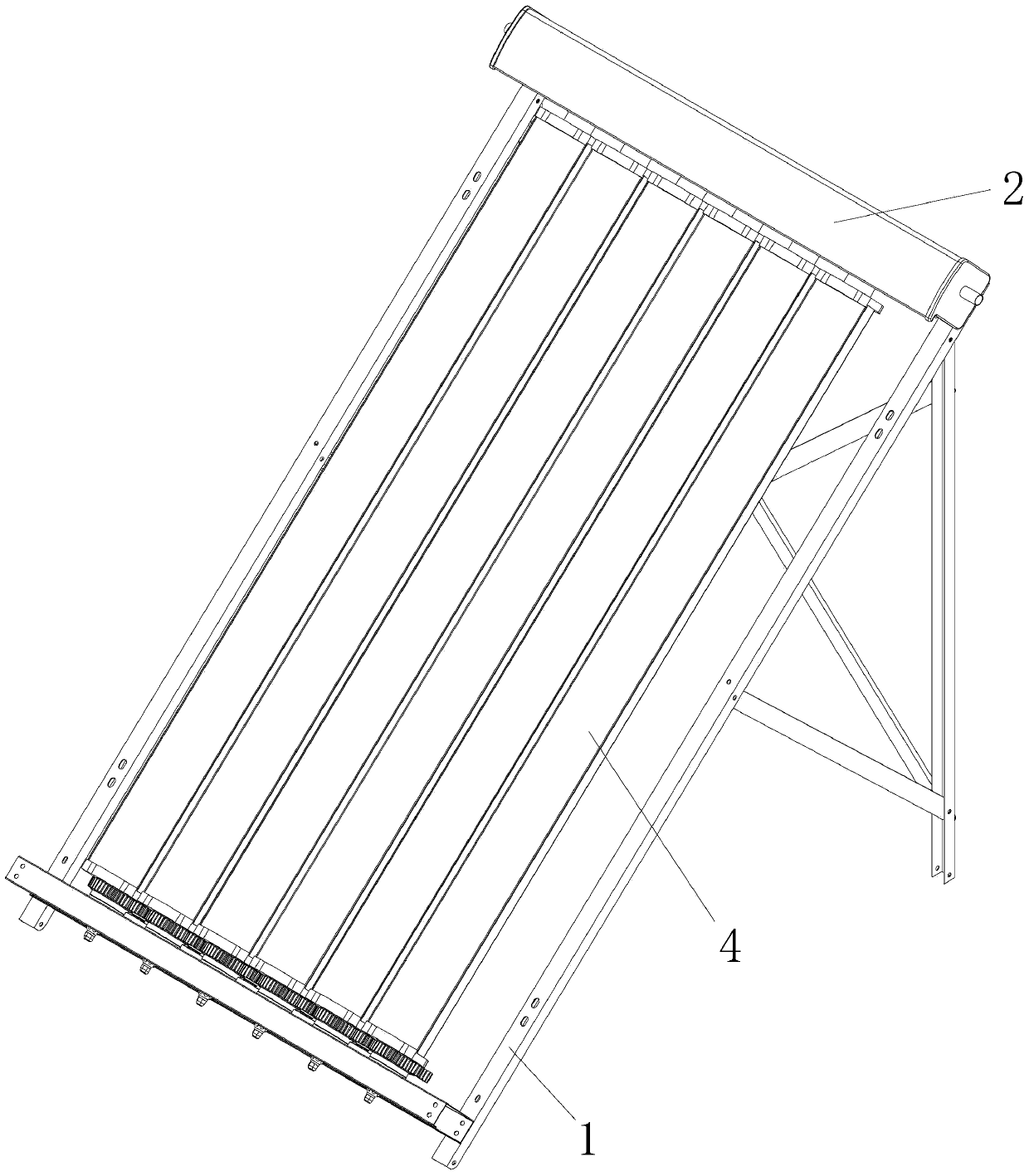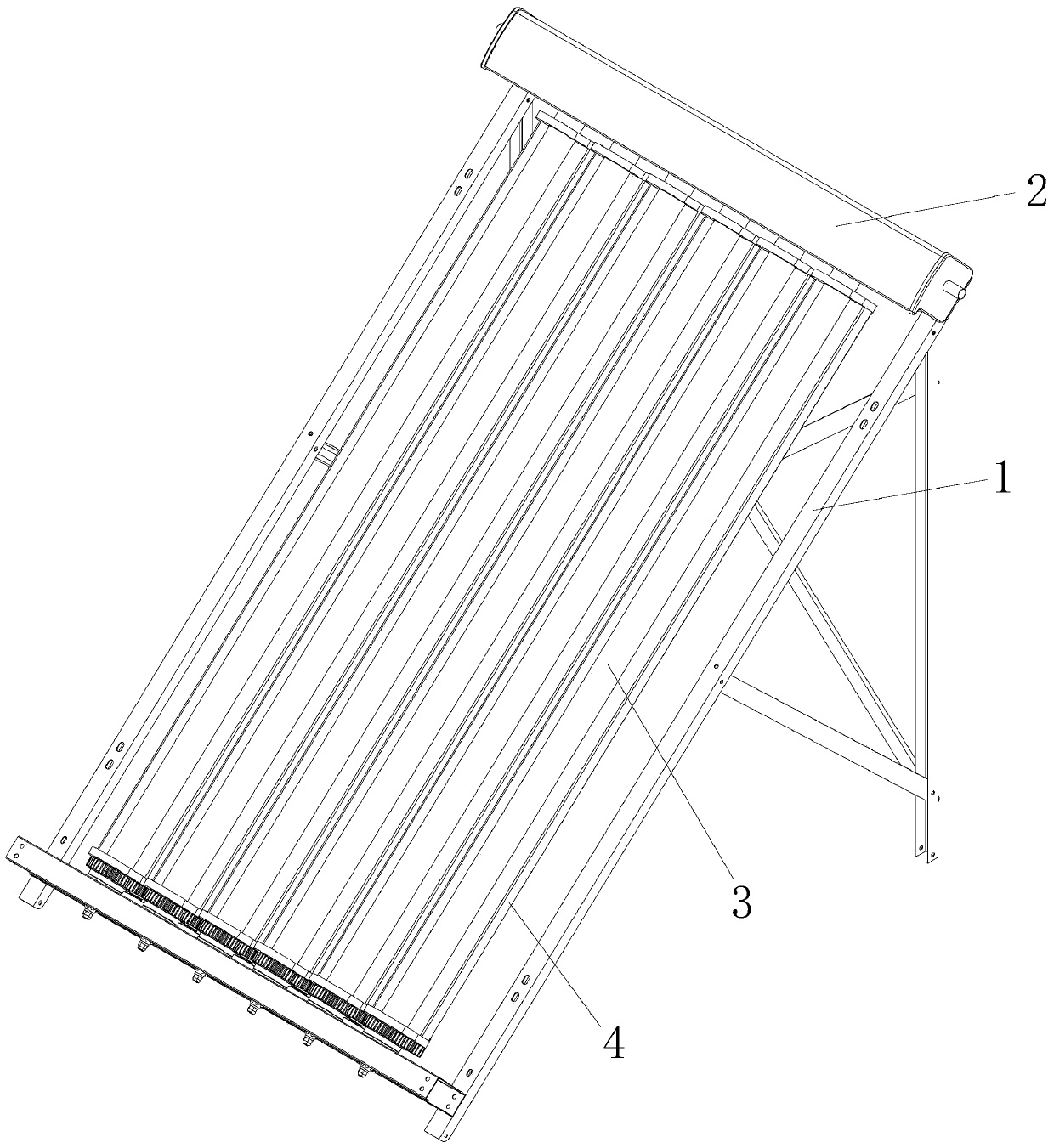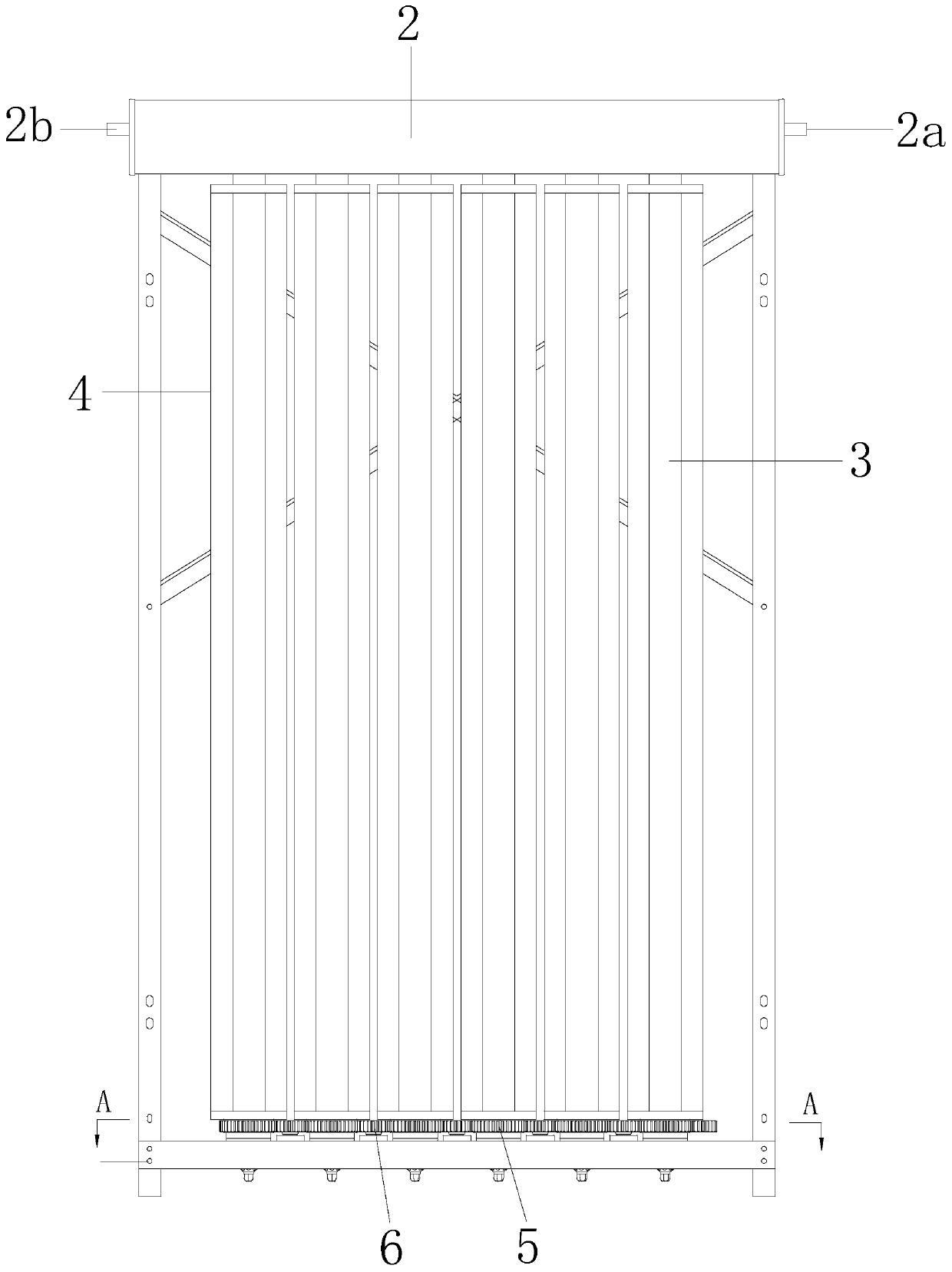Photovoltaic-photothermal device
A photovoltaic and photothermal technology, applied in photovoltaic thermoelectric hybrid power generation, photovoltaic modules, photovoltaic power generation, etc., can solve the problems of energy waste, high solar energy loss, and low photoelectric conversion efficiency, so as to increase the sunlight receiving area and overcome the insufficiency of use frequency High, overcoming the effect of low conversion efficiency
- Summary
- Abstract
- Description
- Claims
- Application Information
AI Technical Summary
Problems solved by technology
Method used
Image
Examples
Embodiment 1
[0072] Figure 1 to Figure 5 A preferred embodiment of the photovoltaic-photothermal device of the present application is shown. Same as some existing photothermal devices (such as solar water heaters), the photovoltaic-photothermal device of this embodiment also includes a base frame 1 on which a water tank 2 and six heat collecting tubes 3 are fixedly arranged. The water tank 2 has a water inlet port 2a and a water outlet port 2b. During actual application, the aforementioned water inlet port 2a and the water outlet port 2b are connected to the water inlet pipeline and the water outlet pipeline respectively, so as to feed the water tank 2 into flowing water. One end of aforementioned each heat collecting tube 3 is all inserted in the water tank (fitting place is sealed and watertight). For the convenience of manufacture and assembly, the aforementioned heat collecting tubes 3 are arranged in the same plane at equal intervals. The base frame 1 is used as the supporting carr...
Embodiment 2
[0094] Image 6 with Figure 7 The second preferred embodiment of the photovoltaic-photothermal device of the present application is shown. The structure of the photovoltaic-photothermal device of this embodiment is basically the same as that of the first embodiment, the only difference being that the heat collecting tube 3 is connected in rotation (and The fastening connection in non-embodiment 1) is on the base frame 1, and the photovoltaic panel 4 and the heat collecting tube 3 in the same photovoltaic-photothermal unit are fixedly connected to each other through the connecting frame 9. When the photovoltaic panel 4 rotates on the base frame 1, the heat collecting tube 3 fixed with the photovoltaic panel 4 also rotates thereupon. Naturally, when the heat collecting tube 3 rotated on the base frame 1, the photovoltaic panel 4 fixed with the heat collecting tube 3 also rotated with the heat collecting tube 3.
[0095] The rotating connection structure between the heat colle...
Embodiment 3
[0105] Figure 8 It shows the third preferred embodiment of the photovoltaic-photothermal device of the present application. The structure of the photovoltaic-photothermal device of this embodiment is also basically the same as that of the first embodiment. The only difference is that the photovoltaic panel of this embodiment is 4. A reflector 8 is fixedly connected to the side facing the heat collecting tube 3, and the reflector 8 has a reflective surface facing the heat collecting tube 3.
[0106] When the photovoltaic-photothermal device is in the photothermal working mode, the photovoltaic panel 4 and the reflector 8 fixed on the photovoltaic panel are turned to the backlight side of the heat collecting tube 3, and at this time, the reflective surface of the reflector 8 faces the sunlight, and the reflector 8 from the collector The sunlight incident on the side of the heat pipe 3 will shoot to the reflective surface of the reflector 8, and after being reflected by the refl...
PUM
 Login to View More
Login to View More Abstract
Description
Claims
Application Information
 Login to View More
Login to View More - R&D
- Intellectual Property
- Life Sciences
- Materials
- Tech Scout
- Unparalleled Data Quality
- Higher Quality Content
- 60% Fewer Hallucinations
Browse by: Latest US Patents, China's latest patents, Technical Efficacy Thesaurus, Application Domain, Technology Topic, Popular Technical Reports.
© 2025 PatSnap. All rights reserved.Legal|Privacy policy|Modern Slavery Act Transparency Statement|Sitemap|About US| Contact US: help@patsnap.com



